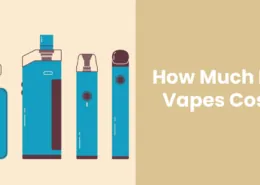Spain’s Vaping Crackdown: A Misguided Step as EU Considers New Rules?
As the European Union prepares to review its regulations on vaping products, several member states are already forging ahead with their own, often stricter, domestic agendas. Spain has emerged as a prominent example, with its government preparing a significant overhaul of national vaping laws by the end of 2025. However, the direction Madrid is taking, spearheaded by Health Minister Mónica García, is raising serious concerns among public health analysts and industry observers. Critics argue that Spain’s anti-vaping plan reflects a fundamental misunderstanding of vaping’s potential role in tobacco cessation and harm reduction, warning that its measures could paradoxically reverse the country’s progress in reducing smoking rates and the associated health benefits.
From sweeping bans on vaping in outdoor public spaces to prohibitions on flavored e-liquids, Spain’s proposed rules are facing domestic criticism for seemingly ignoring the latest scientific evidence on tobacco harm reduction. Worryingly, Spain is not an isolated case within the EU; a contingent of member states is pursuing similarly restrictive policies that many fear could hinder the bloc’s broader public health ambitions, particularly its goal of a ‘Tobacco-Free Generation‘ by 2040 – a central pillar of the European Commission’s Beating Cancer Plan.
Madrid’s Plan: Equating Vaping with Smoking
The Spanish government has framed its “anti-smoking plan” as a necessary update, citing the evolution of vaping products over the last decade and the EU’s tobacco-free vision. However, many argue that the new rules will undermine the very commitments they aim to support. A core issue is the Health Ministry’s decision to place vaping products and combustible tobacco on the same regulatory footing. This approach appears guided by the notion that vaping products “constitute a gateway to addiction and tobacco consumption,” a concept that many harm reduction advocates and some scientific studies have challenged, especially when considering adult smokers.
Key elements of Spain’s proposed crackdown include:
- Public Space Vaping Bans: Prohibiting vaping in a wide range of public spaces, including outdoor areas like restaurant terraces and beaches. Violators could face fines of up to €200.
- Flavored Vape Ban: An outright ban on flavored vapes is planned, despite numerous studies and anecdotal evidence suggesting that flavors play a crucial role in helping adult smokers switch from cigarettes and remain smoke-free.
- Excise Taxes: Spain has already introduced an excise tax on vaping e-liquids and other smoke-free products, making these potentially less harmful alternatives less financially accessible, particularly for lower-income groups who are often disproportionately affected by smoking.
Encouragingly, these measures are not without opposition within Spain. The Spanish competition authority recently requested stronger evidence from the government to justify the severity of its restrictions, echoing concerns from medical professionals about the lack of robust, long-term data to support such drastic moves. Furthermore, organizations like Smoke Free Sweden have warned that Spain’s stringent regulatory stance could reverse recent gains in smoking reduction, while other anti-smoking campaigners have highlighted the significant risk of fueling a vaping black market, a phenomenon observed in countries like Australia that have implemented similarly restrictive policies.
A Growing Anti-Vaping Coalition in the EU?
Spain’s approach is not an isolated one. It has actively joined forces with other EU member states to advocate for tighter EU-wide rules on vaping. In March, Spain, alongside the Netherlands and ten other member states, signed a letter to EU Health Commissioner Olivér Várhelyi calling for stricter regulations in the upcoming revision of the Tobacco Products Directive (TPD). This followed a push by Madrid and 15 other capitals just three months earlier, urging the Commission to propose an expansion of tobacco taxation to include vaping products.
This coordinated pressure from a bloc of EU countries reflects a concerning trend for harm reduction proponents: a perceived reluctance by some policymakers to engage with the latest scientific evidence distinguishing the health implications of combustible tobacco from those of significantly less harmful alternatives like vaping products.
The Science of Harm Reduction: Vaping as a Cessation Tool
While some EU countries are pushing for more restrictive measures, others, including Italy, Romania, and Croatia, have criticized Spain’s proposals for their excessive nature and insufficient consideration of less restrictive regulatory approaches. These nations argue that measures like blanket flavor bans are disproportionate and could be counterproductive to public health goals by making it harder for smokers to quit tobacco.
This position is strongly supported by a growing body of scientific literature. As tobacco regulation expert Clive Bates has emphasized, “smoking is a uniquely harmful consumer behaviour,” with the inhalation of toxic chemicals produced by the combustion of tobacco being overwhelmingly responsible for cancer, cardiovascular, and respiratory diseases. Vaping, by eliminating combustion, significantly reduces exposure to these harmful toxicants.
Key research highlights vaping’s potential in tobacco harm reduction:
- A comprehensive UK review of 363 studies identified vaping as the single most effective tobacco cessation tool currently available.
- NYU-led research found that smokers who transitioned to regular vaping use were up to four times more likely than non-vaping smokers to quit tobacco within a year.
- Another study indicated that smokers who switch exclusively to vaping can achieve health indicators comparable to those of former smokers.
Evidence also challenges specific measures like outdoor vaping bans and flavor prohibitions. Research from King’s College London suggests that vaping produces “little-to-no side-stream emissions,” making overly restrictive public space bans difficult to justify on the grounds of secondhand exposure. Such bans could also inadvertently force vapers into designated smoking areas, thereby increasing their exposure to harmful secondhand cigarette smoke. Furthermore, US studies have confirmed that access to appealing flavors increases smokers’ odds of successfully quitting cigarettes, and that flavor bans could push a significant portion of current vapers back to smoking.
A Regulatory Roadmap for Europe: Prioritizing Science and Harm Reduction
Faced with this wealth of evidence, European policymakers are at a crossroads. The anti-vaping stances seen in countries like Spain and the Netherlands highlight a potential drift away from science-based policymaking that could undermine years of progress in tobacco harm reduction. However, the EU is not obligated to replicate the approaches of its member states.
As Brussels prepares its reform of vaping regulations in the coming months, it has an opportunity to reaffirm a clear distinction between combustible tobacco and less harmful vaping products. This distinction should be guided by core principles: robust scientific evidence, proportionality in regulation, and a commitment to harm reduction. These are the same fundamentals that inform policy responses to many other public health challenges but are sometimes overlooked in the emotive debate surrounding nicotine products.
The path forward should focus on supporting adult smokers in switching to less harmful alternatives, ensuring that regulations are appropriately aligned with the scientifically established risks of different product categories, and prioritizing strong enforcement against the illicit vaping trade – a trade almost certain to flourish if legal, regulated products become overly restricted or inaccessible. Striking the right regulatory balance will be essential in safeguarding public health and keeping the EU’s ambitious ‘tobacco-free 2040’ goal within realistic reach.
- Is It Illegal to Vape or Smoke While Driving in Minnesota? - August 15, 2025
- American Airlines Vaping Passenger Alleges Assault in Police Report - August 15, 2025
- NEXA PIX 35K Disposable Vape with Crystal Tank Review - August 15, 2025







